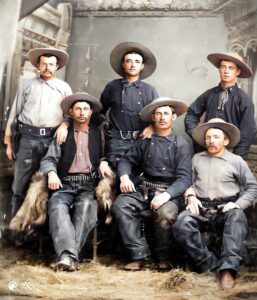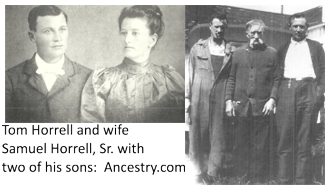
The Enduring Echoes: Unpacking America’s Legendary Tapestry
America, a nation forged in revolution and shaped by an ever-expanding frontier, is not merely defined by its historical documents or political milestones. It is equally, if not more profoundly, sculpted by its legends – the grand narratives, whispered tales, and larger-than-life figures that have seeped into the collective consciousness, blurring the lines between fact and folklore. These legends, whether born from the audacious exploits of frontiersmen, the desperate acts of outlaws, or the whimsical exaggerations of tall tales, serve as a vibrant, often contradictory, mirror reflecting the nation’s aspirations, fears, and untamed spirit.
From the snow-capped peaks of the Rockies to the sun-baked plains of Texas, and from the bustling urban canyons to the quiet, forgotten corners of the South, every landscape seems to possess its own repository of myth. They are stories of resilience, of rebellion, of ingenuity, and sometimes, of sheer, unadulterated violence. They teach us about the values a society holds dear, the characters it chooses to immortalize, and the anxieties that linger beneath the surface of progress.
The Genesis of Myth: Frontier Heroes and Tall Tales

The earliest American legends often sprang from the raw, untamed wilderness and the audacious individuals who dared to conquer it. Figures like Davy Crockett, the "King of the Wild Frontier," and Daniel Boone, the archetypal frontiersman, became synonymous with rugged individualism and a pioneering spirit. Their actual lives, while remarkable, were quickly embellished by dime novels, almanacs, and oral traditions, transforming them into symbols of American self-reliance and bravery. Crockett’s bear-hunting prowess and defiant stand at the Alamo, for instance, were magnified into an almost superhuman saga, encapsulating the struggle against the wild and the fight for liberty.
Alongside these historical figures, purely mythical characters emerged, embodying the vastness and absurdity of the American landscape. Paul Bunyan, the giant lumberjack with his blue ox Babe, personified the colossal scale of early American industry and the Herculean effort required to tame the continent’s forests. His tales, filled with rivers dug by a dragging pickaxe and logging camps so large they moved every time the cook yelled "Grub!", offered a humorous, yet profound, commentary on human ambition and the sheer physical labor that built the nation. Similarly, Pecos Bill, the cowboy who rode a cyclone and tamed the wildest horses, became the quintessential symbol of the American West’s boundless spirit and the larger-than-life characters it produced. These tall tales, often shared around campfires or in bustling saloons, served not just as entertainment but as a form of cultural bonding, celebrating the nation’s unique challenges and its people’s indomitable spirit.
The Shadow Side: Outlaws, Anti-Heroes, and Frontier Justice
As the frontier expanded, so did the complexities of American society. The romanticized image of the lone frontiersman began to give way to the gritty realities of lawlessness, economic hardship, and the often-brutal clash between nascent civilization and those who defied its rules. This era gave rise to a different kind of legend: the outlaw. Figures like Jesse James, Billy the Kid, and Wild Bill Hickok became instant celebrities, their exploits sensationalized by newspapers and pulp fiction. They were often portrayed as both villains and tragic heroes, products of their harsh environment, who challenged authority and, in some cases, were seen as avengers of the common man.
It is within this turbulent landscape that the legend of the Horrell Brothers of Lampasas County, Texas, found its bloody genesis. Their story is not one of romanticized rebellion, but of raw, untamed frontier justice, fierce family loyalty, and an almost pathological defiance of the law. Frank, Sam, Merritt, Ben, and Tom Horrell were, for a period, the most feared and notorious family in post-Civil War Texas. Their legend is etched in a trail of violence that encapsulated the brutality and lack of clear authority in the fledgling state.
Born into a family of Confederate sympathizers and known for their aggressive nature, the Horrells quickly gained a reputation for being "a law unto themselves." Their story truly began to solidify into legend during the infamous Lampasas County War of 1874-1877. This protracted feud, initially with the Higgins family, escalated dramatically, drawing in local law enforcement and Texas Rangers.
The Horrells’ most infamous act occurred on January 22, 1874, in the small town of Lampasas. After a previous altercation, Tom Horrell was shot and wounded by a local lawman. Seeking retribution, Frank, Sam, and Merritt Horrell, along with their cousin Scott Cooley and other associates, stormed the Lampasas County Courthouse where their brother was being held. What followed was a bloody shootout in the saloon below, which was being used as a temporary jail. In the ensuing chaos, four lawmen, including Sheriff Shann, Deputy Higgins (a member of the rival family), and two Texas Rangers, were killed. This single act of audacious violence, openly defying state authority, cemented their place in Texas lore. "They weren’t just outlaws; they were a force of nature, born of a time when a man’s word, or his gun, was his only law," observed one historian of the era.
Despite warrants for their arrest and numerous attempts by the authorities, the Horrells proved incredibly difficult to apprehend. They fled to New Mexico, where their violent reputation preceded them, leading to further clashes and murders. Eventually, they returned to Texas, seemingly undeterred. Their sheer audacity and ability to evade capture for so long contributed significantly to their legendary status. "The Horrells represented a primal, untamed element that refused to bend to the emerging order," wrote another chronicler of the Wild West. Their legend became a testament to the power of family bonds, however twisted, and the enduring challenge of imposing law and order on a vast, wild territory.

Their story, like many outlaw legends, ended tragically. Frank Horrell, perhaps the most charismatic and violent of the brothers, was ultimately ambushed and assassinated in 1878, shot down from behind. Other brothers met violent ends or spent time in prison. Yet, their legend persisted, passed down through generations in Central Texas, a stark reminder of a time when the lines between justice and vengeance were blurred, and a family’s name could strike fear into the hearts of men and authorities alike. Their narrative, raw and unvarnished, serves as a counterpoint to the more heroic tales, revealing the darker, more complex facets of the American experience.
Modern Myths and the Enduring Power of Story
Even as the frontier closed and the nation industrialized, the American appetite for legends did not wane. The industrial age brought its own heroes, like John Henry, the steel-driving man who famously raced a steam-powered drill, embodying the struggle between man and machine and the dignity of human labor. His legend, born from the harsh realities of railroad construction, became an anthem for the working class, a testament to strength, resilience, and the human spirit’s refusal to be mechanized.
In the 20th and 21st centuries, the nature of American legends has continued to evolve. With the rise of mass media, new forms of folklore emerged, often reflecting anxieties about the unknown, the alien, and the supernatural. Bigfoot, the elusive ape-like creature said to roam the Pacific Northwest forests, and the mysteries surrounding the alleged UFO crash in Roswell, New Mexico, became modern legends, fueled by grainy photographs, eyewitness accounts, and a persistent human desire to believe in something beyond the mundane. Urban legends, passed along through email chains and social media, also contribute to this ongoing tapestry, reflecting contemporary fears and cultural anxieties, from haunted roadways to elaborate conspiracy theories.
Ultimately, American legends, from the heroic feats of Davy Crockett to the defiant violence of the Horrell Brothers, and from the whimsical strength of Paul Bunyan to the elusive mystery of Bigfoot, are more than just entertaining stories. They are cultural artifacts, living narratives that continually shape and reshape our understanding of what it means to be American. They reflect our collective history, our struggles, our triumphs, and our enduring fascination with the extraordinary.
These tales, whether factual, exaggerated, or entirely fabricated, serve a crucial purpose: they provide meaning, continuity, and a sense of shared identity. They teach us about courage, perseverance, the consequences of defiance, and the ever-present allure of the unknown. As long as there is an American spirit to be explored, a new frontier to imagine, or an old wound to reflect upon, the legends will continue to echo, whispering secrets from the past and shaping the stories we tell about ourselves. They are the true, vibrant, and often contradictory, fabric of American identity.


